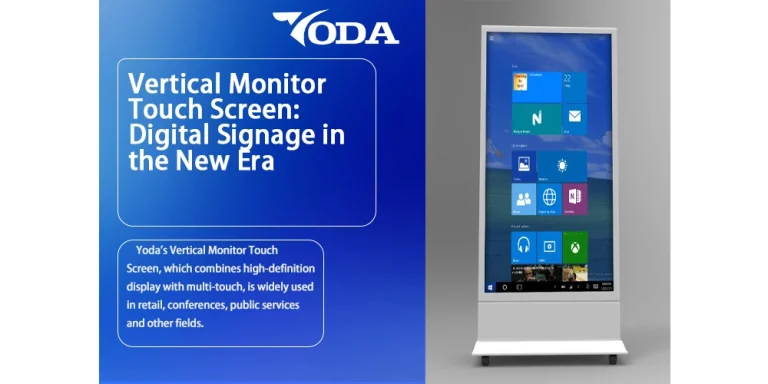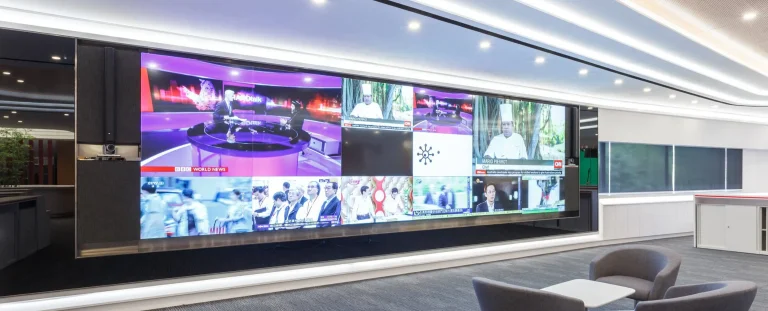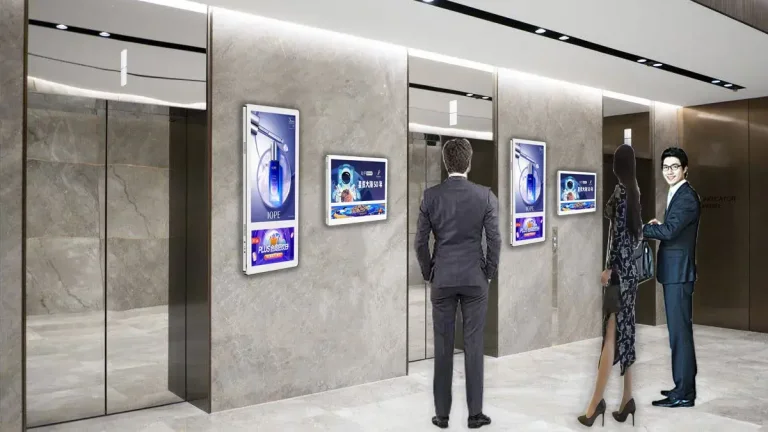
LCD Wall Display Screen vs LED Display Screen
Author:Yoda . 8/18/2025
With the development of modern digital display technology, LCD wall display screens and LED displays are two common choices. Whether it’s commercial advertising, education, transportation hubs, or command and control centers, different scenarios have different requirements for display equipment. As a leading manufacturer specializing in digital signage, Yoda has many years of manufacturing and project experience, providing customers with professional solutions. This article will provide an in-depth comparison of LCD wall display screens vs. LED displays, focusing on display effects, application scenarios, cost maintenance, and functional expansion, to help users better select the right product.
Advantages of LCD Wall Display Screens
1. High-Definition Image Quality and Detailed Performance
LCD video wall displays utilize backlight technology to deliver the same clear images as full HD and even 4K ultra HD LCD wall display screens. Their high pixel density and accurate color reproduction make them ideal for displaying high-definition images or content requiring detailed content. In contrast, LED displays tend to appear grainy when viewed from close distances.
2. Flexible Tiling and Size Expansion
LCD video walls support a variety of tiling options, such as 2×2 LCD wall display systems and 3×3 LCD wall display panels. Users can flexibly combine them to create display walls of varying sizes and proportions based on space and application requirements. Yoda offers ultra-slim bezel LCD wall displays with extremely narrow bezels, creating a more complete visual effect when tiled together.
3. Multi-Scenario Applications
4. Rich Interfaces and Strong Compatibility
LCD video walls are typically equipped with multiple input ports, including HDMI inputs, allowing for easy connection to various signal sources such as computers, cameras, and media players, fulfilling multimedia presentation needs.

LED Display Features
Unlike LCDs, LED displays rely on direct light-emitting diodes (LEDs), resulting in higher brightness and suitable for long-distance viewing and outdoor use. Their main advantages are:
3. Suitable for Outdoor Advertising: LEDs hold an irreplaceable position in plazas, stadiums, and outdoor billboards.
However, when viewed indoors at close range, the larger pixel pitch of LEDs often results in less detailed image quality than LCDs. Furthermore, LEDs have relatively high energy consumption and maintenance costs, requiring increased investment for long-term use.
Comparative Analysis of LCD Wall Display Screens vs. LED Displays
| Comparison Dimensions: | LCD Wall Display Screen | LED Display |
| Resolution: | Full HD / 4K Ultra HD | Due to pixel pitch limitations, graininess is noticeable at close distances |
| Viewing Distance: | Suitable for close and medium viewing distances | Suitable for long viewing distances |
| Tiling Methods: | Flexible combinations such as 2×2 and 3×3 | Large-size, integrated assembly |
| Bezel Effect : | Ultra-slim bezel, virtually seamless | Completely seamless |
| Functionality: | Supports interactive, HDMI, and other interfaces | Limited functionality |
| Application Scenarios: | Classrooms, control rooms, airport advertising | Outdoor advertising, stadiums |
| Cost and Maintenance: | Lower cost, easy maintenance | Higher cost, complex maintenance |

From this comparison, it can be seen that LCD wall displays have a clear advantage in indoor high-resolution applications, while LED displays are more suitable for long-distance, large-size, and outdoor scenes.
Yoda’s LCD Wall Display Screen Solutions
As a professional digital signage manufacturer, Yoda specializes in the research, development, and production of high-quality LCD wall display screens. Our products are renowned for their high-definition image quality, stable operation, and flexible splicing, and are widely used in education, advertising, airports, and control centers.
Yoda offers a variety of splicing solutions, such as 2×2 or 3×3 LCD wall displays, to meet diverse space requirements. For high-end projects, our 4K ultra-HD LCD wall display screens deliver detailed and realistic images. In classrooms, interactive splicing screens improve teaching efficiency; in monitoring and command centers, splicing screens ensure real-time information presentation.
Yoda’s ultra-slim bezel LCD wall displays offer a simple design, virtually seamless splicing, and support for multiple signal inputs for strong compatibility. With OEM/ODM customization capabilities, we provide reliable and professional display solutions to customers worldwide.

Conclusion
When selecting a display device, users should consider the specific application scenario. If the application requires high-definition, detailed images, stable, long-term operation, and a variety of splicing options, LCD wall displays are clearly the more suitable choice. On the other hand, if the project focuses on outdoor advertising or large stadiums, aiming for long-distance visual impact, LED displays are more suitable.
As a leading manufacturer of digital signage for overseas markets, Yoda is committed to providing customers with high-quality LCD wall display products and solutions. Whether for education, advertising, security, or control room applications, Yoda can meet diverse customer needs through customized services. If you are looking for a reliable partner, please contact Yoda to make your project more professional and efficient.






